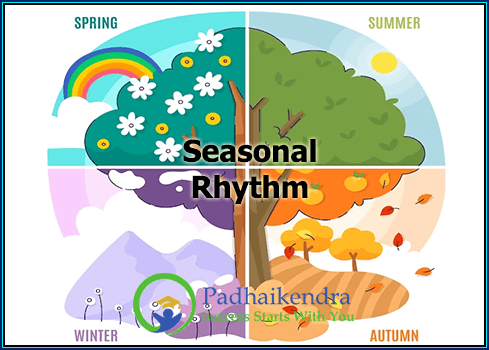Seasonal rhythm refers to the regular pattern of changes in weather, temperature, and natural phenomena that occur in a particular region over the course of a year. This rhythm is primarily influenced by the changing positions of the Earth in relation to the Sun, as well as other factors such as the tilt of the Earth’s axis and the distribution of land and water on the planet.
In many regions of the world, the seasonal rhythm is characterized by four distinct seasons: spring, summer, fall (or autumn), and winter. Each season is defined by specific changes in temperature, precipitation, and other weather patterns, as well as changes in the natural world such as the blooming of flowers or the migration of animals.
For example, in the Northern Hemisphere, spring is typically characterized by warming temperatures, the emergence of new plant growth, and increased rainfall. Summer is marked by hot temperatures, abundant sunlight, and often, the peak of agricultural productivity. Fall brings cooler temperatures, changing colors of leaves, and the harvest season. Winter is typically the coldest season, with shorter days and longer nights, and may include snow and ice in some regions.
The seasonal rhythm is important to human societies for many reasons, including agriculture, tourism, and cultural celebrations. Understanding the seasonal rhythm of a particular region can help individuals and communities prepare for changes in weather and natural phenomena, as well as make the most of the unique opportunities that each season offers.





